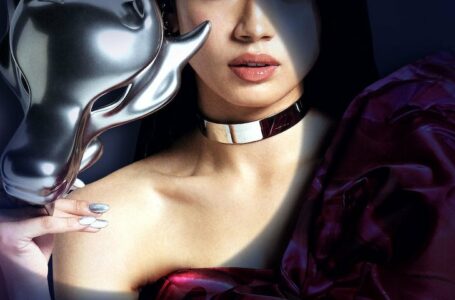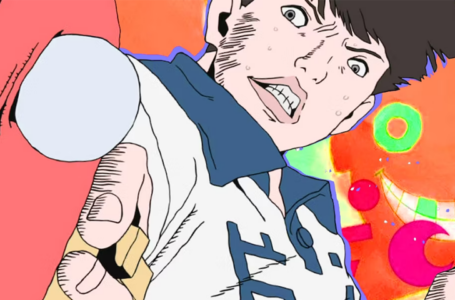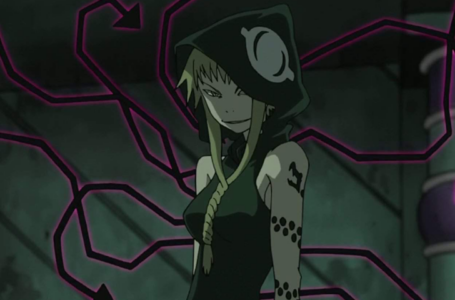Tiger & Bunny deserves to be more popular
With the arrival of Tiger & Bunny on the UK’s Netflix lineup at the end of last month — as well as the recent announcement of a second season — I’ve decided to take a look back on this anime that originally released way back in 2011. Because anyone who has yet to watch the first season should definitely check it out.
To put it simply, it’s an anime with interesting origins and development and one which has universal appeal. It’s deserving of its popularity, but yet somehow still has yet to really take off outside of Japan. Let’s get into it.
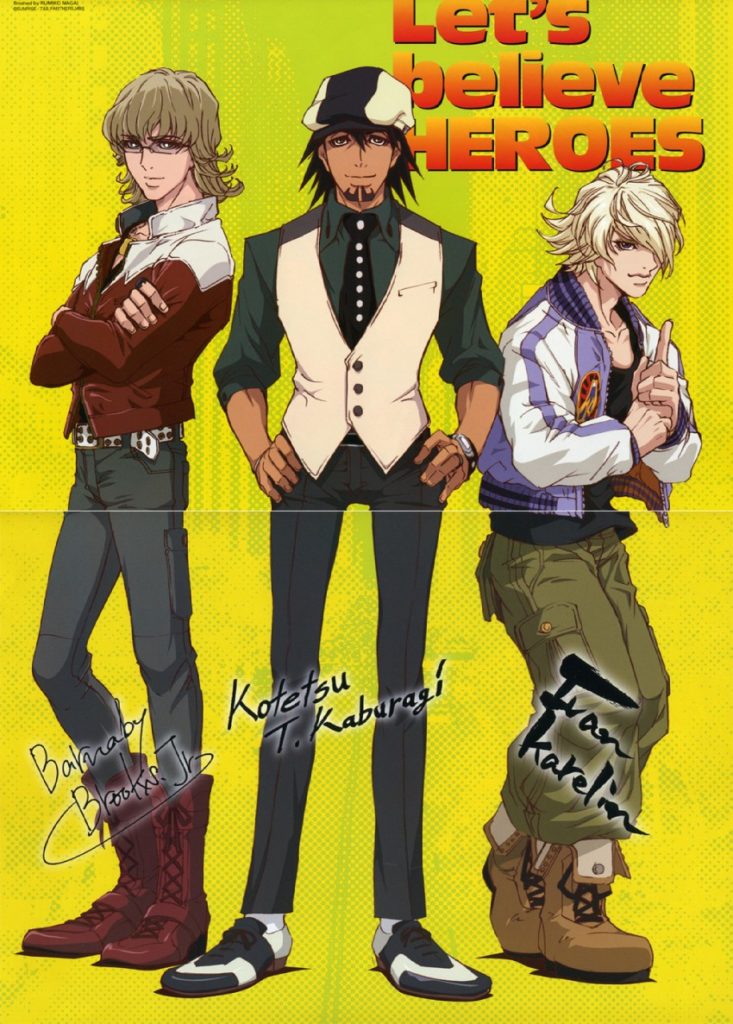
Tiger & Bunny introduction
Tiger & Bunny’s story is set in the New York-esque Stern Bild City. In this not too unbelievable depiction of a possible future, reality TV and ratings are all the rage. Superheroes are mostly motivated to make their income through marketing more than actually serving justice by working for a network show called “Hero TV”.
The show features a consistent theme of corporate influence and idealism versus cynicism, but the anime has an overall positive message of being true to ourselves and bringing joy to those around us. It is a very hearty and human tale despite all the superhero action and dark turns by its latter part, but all this adds a great amount of excitement with its well-paced plot, attractive character designs and wholesome cast.
The anime was made entirely in CG which, for the most part, has aged quite well. The only time it looks especially obvious are when the characters are suited up in their superhero costumes, but most viewers will forget it quickly — the fluid and engaging fight animation, the engrossing characters and the compelling story take all the attention.
And all this is complemented by some stupendous voice acting work, with actors who really sell the key moments of emotional turmoil during certain character arcs. Most notable among these are Masakazu Morita (Ichigo from Bleach and Tidus in the Japanese version of Final Fantasy X) as Barnaby, and Hiroaki Hirata (Rackam from Granblue Fantasy) as Kotetsu; these boys both bring their A-game in expressing the protagonists during these scenes especially.
Furthermore, not only is the show action-packed and character driven, but its initial appeal is with the undeniably strong and charming chemistry between its two male leads. This is not at all pandering; it is instead completely up to the viewer’s perception of it being platonic or romantic. The leads’ relationship progression is one of the most appealing things about Tiger & Bunny, since the way it is developed through mutual trust across the show’s run is both gratifying and natural-feeling.
The show is also rather progressive in that it features a good amount of racial diversity, along with a non-binary character named Fire Emblem. All this helps the show theoretically appeal to a very broad audience — and yet so far, it has only really managed to take Japan by storm. Since its initial airing in 2011, Tiger & Bunny continues to be loved in Japan, but here in the west it was regarded as little more than a summer filler anime.
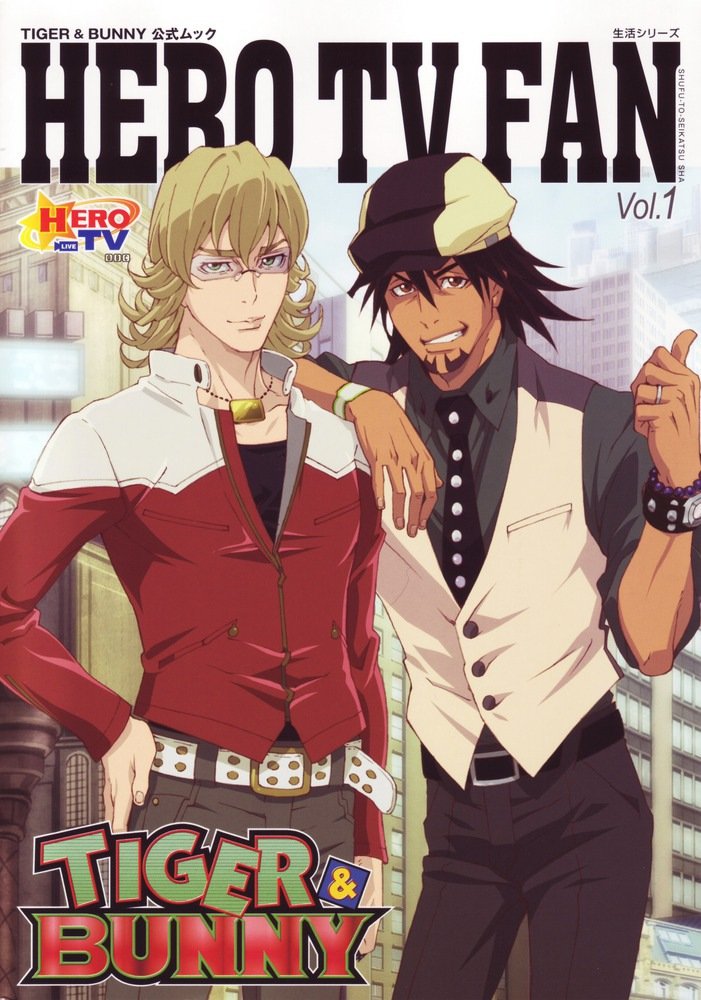
A show that made history
Tiger & Bunny has been mentioned plenty of times before on the Web for being not only a surprise hit in Japan, but it was also voted as Japan’s most beloved anime show ever back in 2017. (Love Live was robbed – Ed.)
It was already impressive that the show managed to be a successful anime without an original manga as the source, but its success also managed to spawn a manga adaptation, two films, a plethora of merchandise — and now an upcoming second season.
What helped the show stand out is a combination of its visually appealing character designs and the unique and interesting position of its main character.
Kotetsu is a much older protagonist — not the typical star of a superhero anime. Supposedly the staff were asked to make both main characters much younger than they are, but the studio thankfully stuck to their guns and created two delightful older gentlemen who many of us will either look up to, or can relate to.
Their maturity adds a new perspective on the superhero genre in a Japanese show, and with its vibrant visuals and episodic structure, Tiger & Bunny is deserving of more attention for its unique design and its clever, universal appeal.
The show also almost suffered from changing genre direction midway, as the production team was originally keen on making the anime much darker in tone and more heavy in tragedy. While the show definitely made for some serious drama with certain storylines, it has an overall, feel-good tone with a fairly light story and characters.
It’s a show beloved in Japan despite its many American influences — and these influences make it all the more surprising it hasn’t enjoyed more popularity outside Japan. The show pays blatant homage to existing superhero media — most notably the work of DC comics, as seen in everything from the colourful Metropolis-style setting, Barnaby’s origin story and the Harley Quinn-inspired design and personality of Kriem. This gives the show what should be a universal, worldwide appeal.
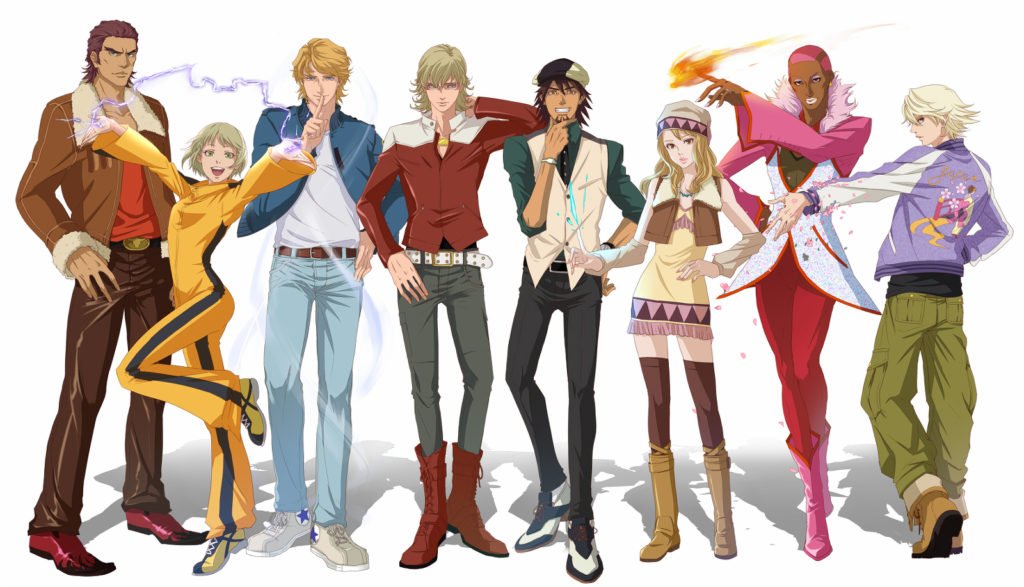
Heartbreaking and heartwarming going hand in hand
And despite how colourful it looks, Tiger & Bunny has an enthralling maturity to it which is not exclusively due to its main characters. The ageing Kotetsu wants to sustain his relevancy as a superhero while his other competitors take the limelight for being more fresh and appealing. Outside of his work, he’s struggling with home life as a widower and single parent to his preteen daughter.
It’s established that his daughter feels distant from Kotetsu due to his work commitments, and while he struggles to connect with her due to this distance, he is still mourning over the death of his wife, a fact which hits even harder when we learn her final words. On top of all that, his ideals are not in line with the corporation he works for.
Meanwhile, Barnaby is searching for his parents’ murderer; this makes him feel disconnected and unable to open up to others as he doesn’t want to be distracted from enacting his revenge.
While the overarching threat feels humorously typical for a superhero plot, the episodic structure aids in exploring and established character motivations and arcs in many of its supporting cast before the show as a whole gets to its climax. It helps make the audience feel connected and considerate towards its heroes by its final moments, with effective characterisation and themes for each character to explore.
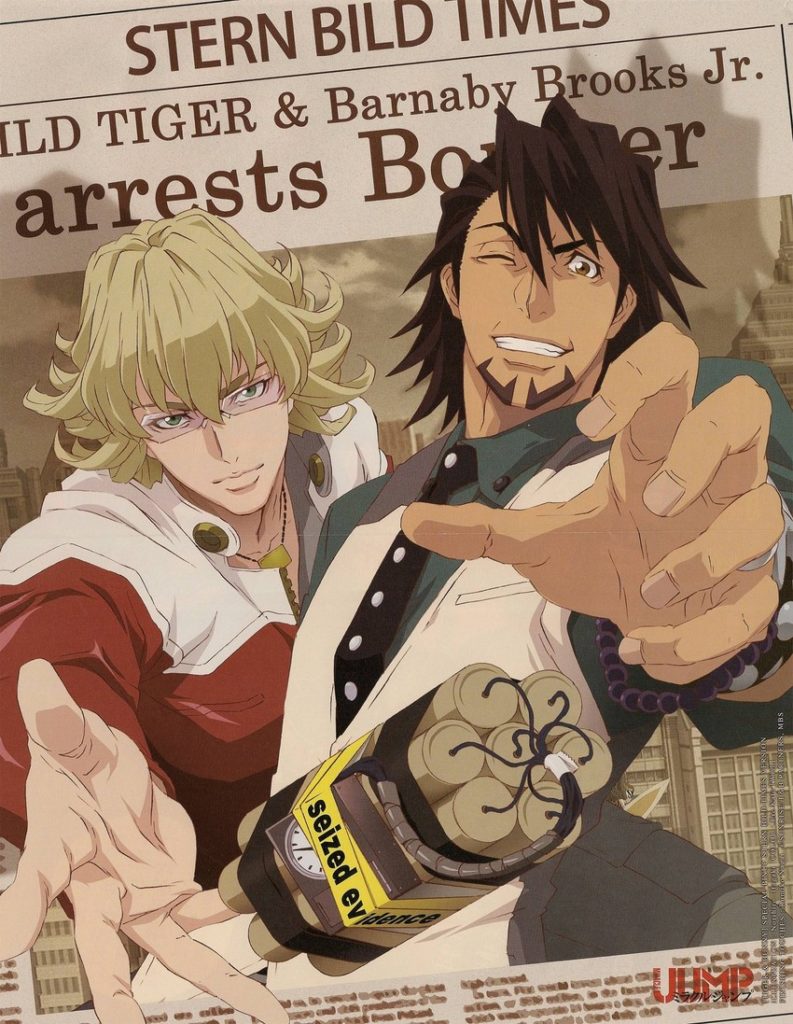
Karina, one of the youngest superheroes in the lineup, feels unsure of her career aspirations; meanwhile Ivan’s low self-confidence and Pao-Lin’s identity disrupt their feeling of fulfilment both as superheroes and in their home lives.
Even the supporting characters enjoy immense growth throughout the first season alone; their actions show how far they have come by the latter part of the series. It’s evident that Masafumi Nishida, the show’s head writer, had previously worked on live action dramas and films before getting to Tiger & Bunny, as the show’s unusual focus on body language and script is unlike any other anime that really delivers its characters’ development. Here’s hoping his next anime venture Re-Main is as successful!
How could I go on without mentioning the fact that we can even find such emotional highs and lows among the storylines of Tiger & Bunny’s villains?
The young Toby, for example, uses his newfound powers to cause havoc due to being bullied, but Kotetsu’s dependable and positive reinforcement steers him in the right direction and hearkens back to his own fateful encounter he had with his icon as a child.
On the other hand, while this exchange saved a future power wielder from being a villain, Tiger & Bunny’s main villain, Lunatic, has a deeply depressing backstory. His actions are unforgivable, but at the same time he is sympathetic — and we can understand that he carried out acts of violence in order to protect what he cared for.
And Kriem, who was feared all her life, had only ever found affirmation and affection from a villain. Her one relationship of course shaped her to be on the “wrong” side, despite it giving her the only human connection she ever got.
Such examples indicate how well the show did in expressing how people are more complex than you might initially assume; morality isn’t all so black and white.
Possibly the best representation of how “grey” humans truly are is Kotetsu himself. He’s a remarkably cheerful, positive and goofy type of character, spouting dad jokes for comic relief and tripping up even when he has the best of intentions. It’s an oddity for an anime to have someone like him as its star, but by using the tried and true superhero genre and staples, Tiger & Bunny has an interesting and poignant tale to tell.
Kotetsu’s cheerful personality is in stark contrast to his job, which can be rather grim at times; it sets him up as one of the many juxtapositions within the show, not just when compared with his partner Barnaby, but with its main villain due to how they all perceive what a hero “should” be.
Kotetsu is spurred on to protect others and use his powers for good after a chance encounter with his idol, Mr. Legend. While a happy memory for Kotetsu, this set him on his path to become a superhero — which in turn was the cause of many future struggles, the most serious of which was the fact that his unreliable work schedule kept him too busy to spend time with Kaede, and even meant that he missed his wife’s final moments.
His journey and character development is just as emotional as it is uplifting, making it no surprise he also came first as Japan’s favourite anime character.
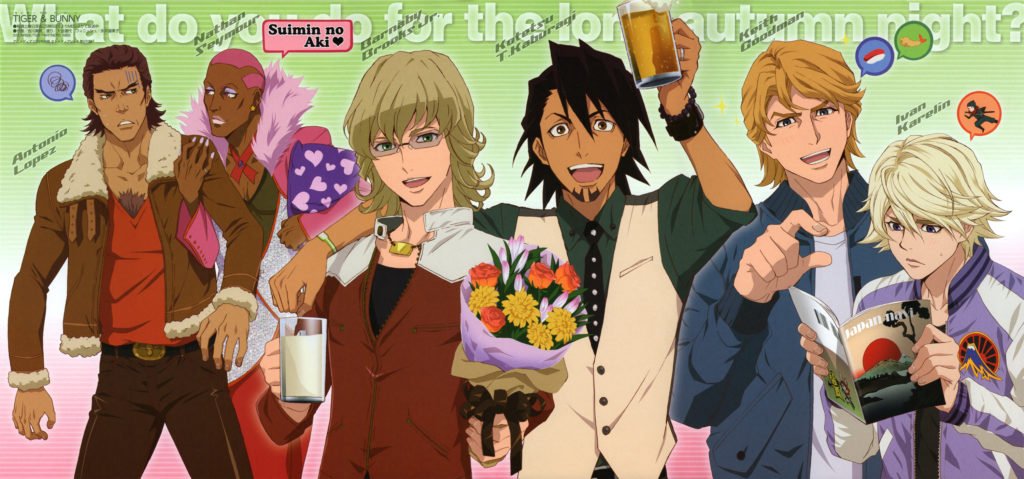
Closing thoughts
It its own way, Tiger & Bunny feels heartbreaking for not capturing the attention it deserved in the west, as two other superhero shows took nationwide attention soon after; One Punch Man and My Hero Academia. Tiger & Bunny even includes a school for aspiring superheroes!
The feeling that Tiger & Bunny came out far too soon before the superhero anime craze four years later is overwhelming, and with how the show shares a number of similarities with 2019’s highly popular TV show The Boys, it makes this all the more nagging of a thought. With a fully realised world not too far from our own combined with very human character arcs and well developed protagonists, Tiger & Bunny is deserving of a lot more attention than it has had to date.
Additionally, if anyone is in the same boat as me and has already watched the first season, it has been a worthwhile experience re-watching it.
From subtle foreshadowing to Easter eggs (the “scarf girl” who appears somewhere in every episode is an infamous example), there is plenty that makes Tiger & Bunny an anime worth coming back to again and again if its lovable cast and engaging action is not already enough of an excuse!
Tiger & Bunny is available to watch now on Netflix.
Join The Discussion
Rice Digital Discord
Rice Digital Twitter
Rice Digital Facebook
Or write us a letter for the Rice Digital Friday Letters Page by clicking here!
Disclosure: Some links in this article may be affiliate links, which means we may earn a small commission if you make a purchase after clicking on them. This is at no additional cost to you and helps support Rice Digital!
- Sigh of the Abyss: Shadow Bonds – Prologue Review - October 7, 2023
- Is She The Wolf? is wickedly addicting TV - October 6, 2023
- The steady consumption of Slow Damage - October 5, 2023




